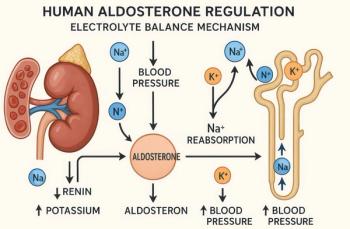
Beware Use of Foxglove in New-Onset Atrial Fibrillation
A very large observational study heightens concern around use of digoxin in the treatment of newly diagnosed atrial fibrillation, despite guideline recommendations.
A once valued treatment in the 1700s, digoxin is a cardiac glycoside derived from the flowering plant wooly foxglove. Despite having been in use for more than 200 years, its risk-benefit profile remains uncertain and clinical application of this drug continues to be ambiguous, including in the treatment of atrial fibrillation (AF). In the most recent iteration of the ACC/AHA/HRS AF guidelines from March 2014, the expert panels note that for AF, digoxin “is not usually first-line therapy” and recommend that it be used in combination with beta-blockers or non-dihydropyridine calcium channel blockers when ventricular rate is insufficiently controlled .
In a large retrospective observational study from Stanford University that used the database from The Retrospective Evaluation and Assessment of Therapies in AF (TREAT-AF), investigators attempted to assess the association of digoxin use with mortality over time. Study authors identified patients with newly diagnosed AF seen within 90 days in an outpatient setting between 2004 and 2008. Using multivariate propensity-matched Cox proportional hazards models, 122,465 patients were analyzed with 353,168 person-years of follow-up. The study population was made up mostly of men (98.4%) with a mean age of 72 years. Comparing the 23.4% of subjects who received digoxin in the initial 90 days after AF diagnosis with propensity-matched subjects who did not, the mortality rates were higher (28 more deaths per 1000 person-years) in the digoxin group. Digoxin was independently associated with a 26% higher hazard for death after multivariate adjustment and a 21% higher hazard after propensity matching. There was no effect modification by comorbidities (age, sex, heart failure, renal function), drug adherence, or concomitant medications (amiodarone, warfarin, beta-blockers).
The strengths of this study are its large sample size and duration of follow-up. Based on these findings, digoxin used in newly diagnosed AF appears to be associated with an increasing risk of death, independent of other factors. Given the study’s observational nature, however, there may be residual confounding variables. Although the authors have taken extensive measures to control for this fact, the nonrandomized design allows for the risk of confounding by indication. As we await the results of future prospective or randomized studies, it appears most prudent that physicians ought to choose alternative therapies to digoxin in patients with newly diagnosed AF and avoid its use whenever possible. It seems that the digoxin pendulum has swung again-this time away from its use. Perhaps the next iteration of the guidelines may eliminate digoxin altogether.
References:
1. January CT, Wann LS, Alpert JS, et al. 2014 AHA/ACC/HRS guidelines for the management of patients with atrial fibrillation: a report of the American College of Cardiology/American Heart Association Task Force on Practice Guidelines and the Heart Rhythm Society.
2. Turakhia et al. Increased mortality associated with digoxin in contemporary patients with atrial fibrillation. Findings from the TREAT-AF Study.
(Image courtesy of Wikipedia.)
Newsletter
Enhance your clinical practice with the Patient Care newsletter, offering the latest evidence-based guidelines, diagnostic insights, and treatment strategies for primary care physicians.






























































































































































































































































































































